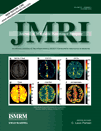Mixed-bandwidth acquisitions: Signal-to-noise ratio and signal-to-noise efficiency
Abstract
Purpose
To evaluate signal-to-noise ratio (SNR) and SNR efficiency in mixed-bandwidth acquisition (MBA). SNR efficiency describes the achievable SNR per unit time and is a basic aspect in clinical applications to optimize work flow.
Materials and Methods
Corresponding simulations were performed and predictions of the theory verified in phantom experiments and volunteers. Specifically, SNR and SNR efficiencies were compared for an MBA fast low-angle shot (MBA-FLASH) sequence and traditional single-bandwidth acquisitions.
Results:
MBAs result in an SNR penalty compared to single-bandwidth acquisitions for a given sampling time. Furthermore, the nonuniform distribution of noise characteristics in k-space introduced by MBA sequences caused potential changes in noise texture of the image.
Conclusion
Overall, the MBA-FLASH imaging experiments in phantoms and healthy volunteers support the feasibility of using dual or multiple bandwidth acquisitions, which may be important in alternative imaging schemes that combine multiple acquisition techniques. J. Magn. Reson. Imaging 2010;32:997–1002. © 2010 Wiley-Liss, Inc.




